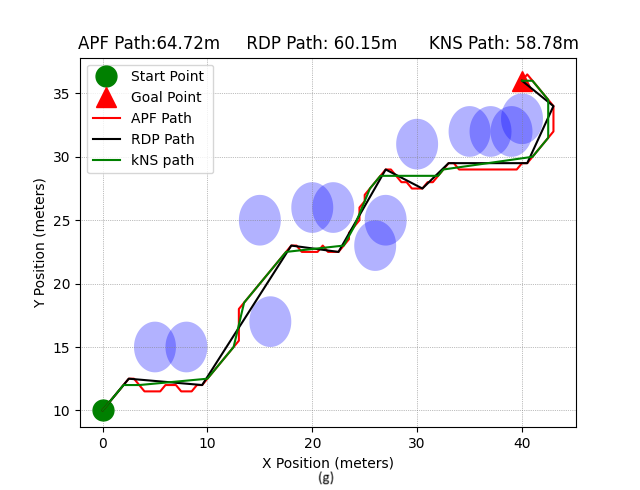Artificial potential field path length reduction using Kenneth-Nnanna-Saleh algorithm
Keywords:
Path planning, Artificial potential field, Obstacle avoidanceAbstract
The artificial potential field (APF) is one of the famous path planning algorithms. It creates a virtual force field that attracts a robot to the goal or repels it from an obstacle, forcing it to move along the direction of the resultant forces toward the goal. The repulsive force pushes the robot away from the obstacle, causing a large displacement from the straight path, increasing the path length. This paper presents the Kenneth-Nnanna-Saleh (KNS) algorithm that can shorten the length of an APF path by reducing its waypoints. The algorithm takes an APF path that is generated from the problem domain as input, evaluates angles at each point, and compares the angle with a pre-defined threshold angle to remove or retain the point in the resultant KNS path. Simulation environments, each with varying complexity in obstacle arrangement, were designed for various simulations of the proposed algorithm. A Python-based computer simulation program was implemented and used to simulate the KNS, APF, and a similar waypoint reduction algorithm -Ramer-Douglas-Peucker (RDP) and the results were analyzed. The results show that KNS can yield a shorter path than APF and RDP and retain the obstacle avoidance feature of the path. The shortened path maintains the geometry of the APF path and leads to reduced energy cost for the deployment of robots.

Published
How to Cite
Issue
Section
Copyright (c) 2025 Kenneth Christopher Ugwoke, Nnanna Nwojo Agwu, Saleh Abdullahi

This work is licensed under a Creative Commons Attribution 4.0 International License.







